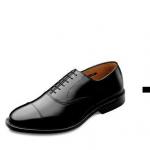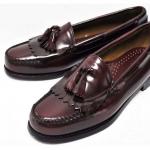Show this post to your boyfriend. How to wear a suit
- Yes, sir. Please, just a quarter of an inch higher than your trousers, sir. In the gap between the boot and the cuff, the sock should flicker with casual elegance. This subtlety is extremely important.
- So?
- Perfect, sir.
- There are moments in life, Jeeves, when a person asks himself the question: "Are trousers worth such attention?"
- This mood will pass, sir.
P. G. Wodehouse
The original idea of this blog was to write about men's style, dodging the pitfalls of obvious and hackneyed topics. Nevertheless, objective reality forces me to write a couple of program texts. The appearance of today's material is due to two reasons:
- The myth that "suits must be able to wear." Yes, of course, style is not only clothes, but also self- / worldview, but this fact does not justify those who say "suits do not suit me." To make the suit look good, and the "magic" began to work, it is enough to adhere to a number of basic landing rules, which are described below.
- Unconscious delusions and total heresy, which are full of such articles on the Internet, written as a carbon copy. Some of the information that goes into them is hopelessly outdated, the other is initially incorrect. I would like to make material that is relevant today, but at the same time “timeless” in essence.
So, as usual, there are three basic parts of a suit - a shirt, trousers and a jacket (about accessories - not today). Let's go in order.

Shirt - second skin. The only freedoms that should be in it are those without which you cannot move / breathe (armhole, collar, slight allowance at the waist). "Sails" sticking out of the trousers and fluttering in the wind are not needed. The sewing seam of the shoulder and sleeve should ideally be located on the highest upper bone of the shoulder (while writing the post, I learned that it is called "acromion" and is not the edge of the collarbone, as I thought before).
Sleeve length is more of a matter of taste and luck. In my opinion, in a modern suit, in a free state, it should reach exactly to the junction of the forearm and hand (if you look at the inside of the hand, this is a “fold” of skin at its base), and retrogrades will probably add another 1-2 centimeters in length. Sleeves shorter than the border of the brush should not be chosen, especially if the shirt will be worn under a jacket (I will explain why later).

RIGHT HERE
The collar must be fastened with the top button without restricting breathing., but if this fails (provided that otherwise the shirt fits perfectly) - just wear it with the collar unbuttoned, and when putting on a tie, “tighten” the collar with it without fastening the buttons. This is a half measure, but better than a shirt 2-4 sizes too big.

And most importantly (along with the shoulders), on which almost everything is pierced - landing at the waist. A chemise is not an informal shirt that can be worn out! This is an item that repeats your figure, so the critical maximum of freedom that you can see when tucking it into trousers / jeans is the third picture (although I strongly recommend that you strictly adhere to the first and second). Despite the terrible stockiness, this illustration conveys the essence well:

In general, if you buy a slim or even regular fit shirt, you are unlikely to encounter this problem, but just in case, the armhole (this is the place where the body and sleeve are paired, where the hand sticks) should also only provide freedom of movement, and no more There shouldn't be any volume of tissue.
In 1944, everything was, ahem, a little different.
Pants are specific to different body types and styles.. For example, my tongue won’t turn around to condemn someone’s choice of waist height - some can easily go with “navel-length” trousers (I’m not kidding, this can work, especially if the wearer knows how and loves to wear clothes in a vintage spirit), others are shown only super-low waist, but there are still universal rules that will help in choosing.

Rule number 1: fit at the waist. In order to understand how certain trousers are generally worn (high, regular, low waist), you need to put them on so that in the crotch area (sorry, but tailors are people who do not know shame) there is a minimum (but, again, , which does not restrict comfort and movement) space (I will make a reservation that we are talking about trousers not from Vivienne Westwood and other extravagant fashion brands). Only then will you see the waistline and be able to conclude whether it is your size with trousers or not. There's nothing worse than a pair of mid/high waist pants that "perfectly" sit on a man's hips, leaving a monstrous opening in the crotch area.
If you like the overall fit, but your waist is a few inches wider, or at what you want - just buy and give the trousers to the master to fit the waist. You can, for example, me. ☺
Rule number 2: pants length. If you are already exactly understood how the trousers should sit at the waist correctly (and made sure that they did sit) - look at the length (exactly in this order, not vice versa!). One of the terrible things that is written in almost all the "guides" is that the trousers should form the mythical "one crease on the shoe." Nowadays, this strange wording misleads many beginners into buying dramatic long trousers, so I would advise you to listen to the phrase of Jeeves from the epigraph ("the gap between the boot and the cuff should flicker with casual elegance"). Too short trousers in a business or semi-business style will be extravagant, but let's finally say goodbye to the unkind Soviet tradition "the more fabric, the better." Remove the bulk, hand over the trousers to the tailor (I won’t say to whom) and happily wear an item of clothing that matches your size. Briefly - the length of the trousers should slightly cover the bone at the ankle. No more.

Fitting a jacket is more difficult than it looks at first glance. Even though it is one of the most structurally complex pieces of clothing in the world and its fit has a lot of subtleties, let's start with the basics for now. The main point is the fit of the shoulders. The edge of the jacket shoulder = the edge of your shoulder! Remember this once and for all. Even in the loosest fit, the shoulder line should not go further than your own shoulder. So, almost like a shirt, the upper shoulder bone is the beginning of your jacket sleeve. The maximum distance from this point is 1 cm. Most other defects can be corrected by the master, but the shoulders cannot be adjusted. So be careful with your choice.

Simple and clear picture
Further, continuing the discussion of the upper half, - how at the same armhole, the better the jacket. Let me remind you again: the armhole is the place where the sleeve is sewn into the “torso” of the jacket. Of course, the phrase about the “best” jacket is exaggerated, but in 90% of cases it is true. Firstly, a wide armhole is less aesthetic, secondly, it provides inconvenience when moving and raising arms, and thirdly, a wide armhole is an unambiguous indicator of a factory-made jacket (it guarantees the manufacturer that any buyer will “fit” into it). Therefore, make sure that the freedom in the armhole is, if not minimal, then at least moderate.

The length of the jacket is a debatable issue. Again, the first thing I want to do is debunk myths. The most delusional replicated postulate - free hanging the hand should grab the edge of the shelf (the front of the jacket), then the length is correct . The hands of all people, suddenly, are different, and if she grabbed it from you, this still does not mean anything. With some, this rule works, with others it doesn’t; it cannot be called universal in any way.
More sane, but for my taste a little outdated cliché - back jacket should completely cover the buttocks . Ok, this can work, as long as the rest of the fit looks perfect. But usually in a situation of choosing the first / second / only suit, this is not the case, which means that this will become another “plus” in the piggy bank of features that turn your figure into a kind of potato sack. My personal “rule”, which has never failed so far, is: in a modern suit, the back of the jacket should slightly cover the protruding point of the buttocks(to be more straightforward - the middle of the priests). This minimum is quite enough not to look ridiculously “fashionable”, but at the same time to emphasize the figure and lightness. This length is preferable for medium and low waist trousers, in the case of a high one it is better to stop at the retrograde “completely cover the buttocks”. The picture above is an example of a good modern jacket length.
Further - waist issue. I recommend to wear a jacket buttoned up in those cases, if it is not necessary otherwise. This means that when fastening the top button, the jacket should take the shape of your body. Of course, this is what happens with ideal suits in an ideal world, but in our case, let's agree on at least one thing (let me repeat the cliché again, this time completely adequate) - between the shirt and the buttoned jacket button, maximum freedom - the volume of one apple or fist. Anything more is overkill. If the jacket "tightens" and restricts movement when fastening a button, it should also be neglected.


Fit on the waist of a smoker / Fit on the waist of a healthy person (but the sleeves are not good either there or there)
Your jacket sleeves are too long. Perhaps you think that the jacket should cover the shirt. Perhaps you just haven't thought about it. Anyway - jacket sleeves should be 1-3 centimeters shorter than the shirt. If you do not see the shirt sleeve from under the jacket, immediately go to the master and reduce the sleeve of the jacket (or change the shirt). A good guideline for the correct length of a jacket sleeve is the bone on the outside of the forearm, which passes into the hand. From her to the brush just about a couple of centimeters. Shirts with a French cuff (under the cufflink) should look out even more - 2-4 cm or, for easier orientation, before the edge/center of the cufflink is visible.

Correct sleeves, correct shoulders, correct armhole.
One more thing - please do not wear a jacket with three buttons ("2.5 buttons", where one button is at the inflection of the lapel, does not count). Just put it on the mezzanine. If you're not into vintage fashion and you're under 45, everyone will think you inherited it from your dad or grandpa. That THE LOWER BUTTON OF THE JACKET NEVER BUTTON I hope you know without me. If not, remember forever and bring it to automatism.
Slits, lapels, buttonholes and other details are more about style than fit, so we won't touch them for now.
If you remember these simple and quite intuitive basics, you (or your boyfriend) will become cooler than Colin Firth.

Well, ok, you won't, but at least get a little closer.
Reposting to other resources - only with the mention of the address of the original.
Subscribe to blog news






